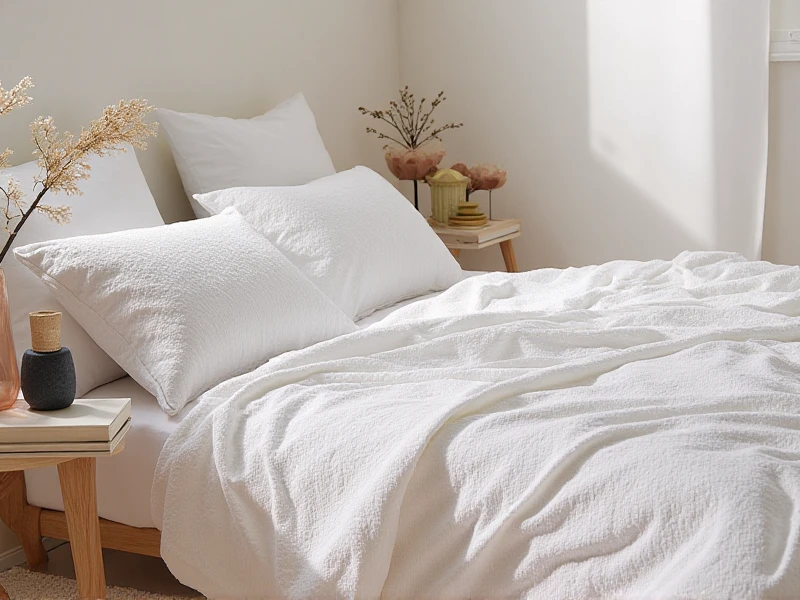The Fascinating World of Textiles: Innovations, Types, and Sustainable Trends
2025-06-04

SEO文章内容(关键词:Textiles)
Textiles have woven themselves into the fabric of human life for millennia, serving not just as clothing but as essential elements in countless aspects of daily existence. From the soft cotton sheets you sleep on to the durable polyester in your outdoor gear, textiles play a crucial role in comfort, functionality, and culture. In this in-depth exploration, we'll uncover the key features of textiles, how they're made, and why sustainable options are shaping the future of the industry.
A Brief History of Textiles
The story of textiles dates back thousands of years, with early civilizations like the Egyptians and Chinese pioneering techniques that transformed fibers into fabrics. In ancient times, natural materials such as wool from sheep and linen from flax were spun by hand, laying the groundwork for the advanced weaving methods we see today. The Industrial Revolution marked a turning point, introducing machines that made textiles more accessible and affordable. Fast forward to the 21st century, and the global textiles industry is a behemoth, worth billions annually and touching everything from high fashion to home décor.
Types of Textiles: Natural vs. Synthetic
Textiles can be broadly categorized into natural and synthetic fibers, each with unique properties. Natural fibers, derived from plants or animals, include staples like cotton, celebrated for its breathability in summer clothing; silk, known for its luxurious softness; and wool, which provides excellent insulation in cold weather. These materials are biodegradable and often preferred for eco-friendly choices. On the flip side, synthetic textiles, such as polyester, nylon, and acrylic, are man-made inventions using petrochemicals. They offer advantages like durability, resistance to wrinkles, and affordability, making them popular in activewear and industrial applications. Blends of natural and synthetic fibers—e.g., cotton-polyester mixes—combine the best of both worlds for enhanced performance.
The Manufacturing Process: From Fiber to Fabric
Turning raw fibers into finished textiles involves several intricate steps. It all starts with harvesting or sourcing materials: for naturals like cotton, farmers gather the crop, while synthetics are created through polymerization in factories. The fibers undergo processes like carding, where they're cleaned and aligned, then spinning into yarns. Weaving and knitting transform these yarns into fabrics, with techniques ranging from simple looms to high-tech automation. Finishing steps, including dyeing and coating, add color, texture, and functional qualities like water resistance. For instance, advancements in digital printing now allow for stunning patterns on textiles without excessive waste.
Applications of Textiles in Modern Life
Textiles are incredibly versatile, extending well beyond apparel to improve everyday living. In the home, they bring style and function through curtains, upholstery, and bedding. Technical textiles step into specialized roles—geotextiles reinforce soil in construction, while medical textiles feature in bandages and surgical gowns for their sterile properties. The world of fashion relies heavily on textiles for creativity, with innovations like smart fabrics incorporating sensors to monitor health or change color based on temperature. Even in automotive design, textiles like flame-resistant nylon enhance safety. This versatility underscores why textiles remain indispensable across sectors, contributing to both economy and innovation.
The Rise of Sustainable Textiles
As environmental awareness grows, sustainable textiles are gaining momentum. Issues like water waste in cotton cultivation and microplastic pollution from synthetic fibers have spurred action toward greener practices. Organic cotton, grown without pesticides, reduces harm to ecosystems, while recycled textiles breathe new life into old fabrics—e.g., turning plastic bottles into polyester yarns. Innovations like biodegradable fibers from bamboo or hemp offer renewable alternatives, and certifications like Fair Trade ensure ethical labor. Brands worldwide are adopting "circular economy" models, where textiles are designed for reuse and recycling. This shift not only minimizes waste but also empowers consumers to make eco-conscious choices.
Embracing the Future of Textiles
In conclusion, textiles continue to evolve with exciting developments on the horizon, such as nano-tech fabrics that self-clean or 3D-printed textiles for custom designs. By understanding their types, production, and applications, you can appreciate and engage with these materials in a more meaningful way. Join the conversation about sustainable choices—what textiles resonate with you? Share your thoughts and stay tuned for more insights.
(Word count: 820)
Category: